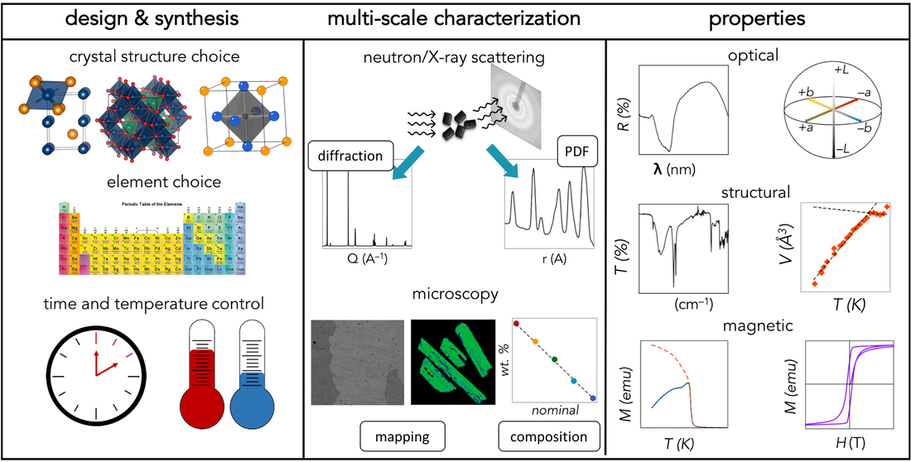researchRead below to learn more about our research projects.
|
cool pigments |
Urban heat islands, such as Los Angeles, experience more heating than surrounding rural areas, leading to detrimental effects to human health and the environment. “Cool” pigments painted on infrastructure in urban heat islands have the advantage of displaying pleasing colors while also reflecting away much of the sun’s heat. We are interested in developing cool pigments using both conventional furnace synthesis and rapid microwave-assisted synthesis (described below), and understanding their near-IR reflectance properties. We will exploit selection rules for electronic transitions (which often result in color) by choosing crystal structures with noncentrosymmetric metal centers and varying the transition metal identity to tune color.
negative thermal expansion materials
Conventional, positive thermal expansion (PTE) is a result of the inherent anharmonicity in bonding in real molecules and extended structures. As temperature increases and higher vibrational levels are populated, the equilibrium atomic distance increases as a result of the asymmetric potential energy well. Some materials exhibit negative thermal expansion (NTE), meaning they contract upon heating. These materials are valuable in applications where it is necessary to compensate for unwanted positive thermal expansion. We are interested in understanding materials which exhibit NTE properties because of flexible framework structures. We will investigate the NTE properties of these materials and how they are affected by element substitution as well as varying synthetic methods. This work is currently supported by the National Science Foundation.
See Dr. Cooley give a talk to the general public about this research in CSUF's OLLI Eclectics class: see Negative Thermal Expansion, Nov 29, 2022
See Dr. Cooley give a talk to the general public about this research in CSUF's OLLI Eclectics class: see Negative Thermal Expansion, Nov 29, 2022
rapid microwave-assisted synthesis
A common method to synthesize solid-state materials involve several days of high-temperatures in a furnace, contributing to detrimental effects to the environment because of increasing global energy demand. Microwave-assisted synthesis, using a domestic kitchen microwave, is an up-and-coming, greener alternative to traditional synthesis methods that can be completed in under half an hour with similar results. We will develop microwave-assisted synthetic techniques toward accelerated synthesis of “cool” pigments and NTE materials while comparing their structures and properties to samples synthesized using traditional furnace synthesis.
